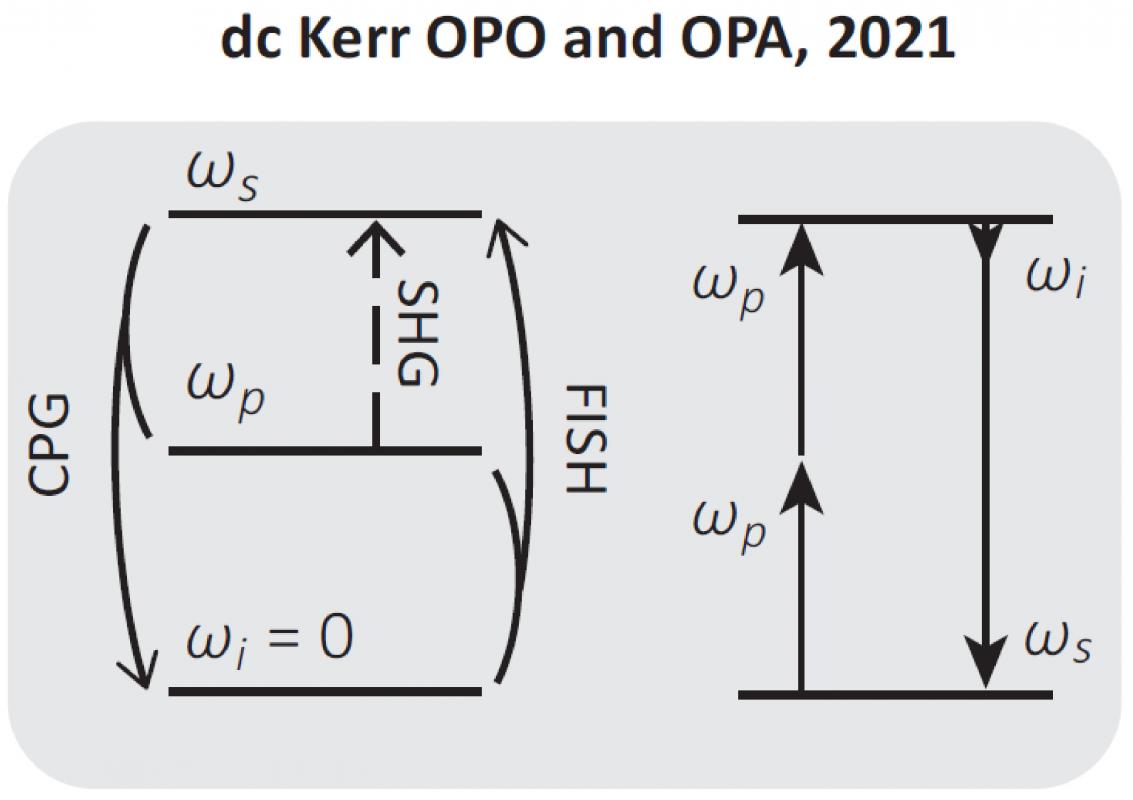
Considering photo-induced second harmonic generation as a DC-Kerr optical parametric oscillation process
Photo-induced second harmonic generation (SHG) in silicon photonics is a process in which a DC electric field, generated by a process known as the coherent photogalvanic effect, combines with the medium's third-order optical nonlinearity to create an effective second-order nonlinearity.
Recently, we demonstrated that this process can be quite efficient in silicon nitride microresonators by resonantly enhancing the interaction of phase- and frequency-matched fundamental and second harmonic modes.
In a new paper, led by Xiyuan and published in Physical Review Applied, we discuss whether this photo-induced SHG can be viewed as an optical parametric oscillation process involving the fundamental (acting as a pump), the second harmonic (acting as the signal), and the DC field (acting as the idler). This hypothesis immediately explains the threshold behavior observed in experiments, as well as unconventional light amplication process that has also been observed. At the same time, its implications on the properties of the DC field and the ability to reduce the threshold for efficient SHG point to future work that can help us better understand the physics of this interesting nonlinear optical process.
Lu, X., and K. Srinivasan, "Considering Photoinduced Second-Harmonic Generation as a dc Kerr Optical Parametric Oscillation or Amplification Process", Physical Review Applied, vol. 16, 014027 (2021).